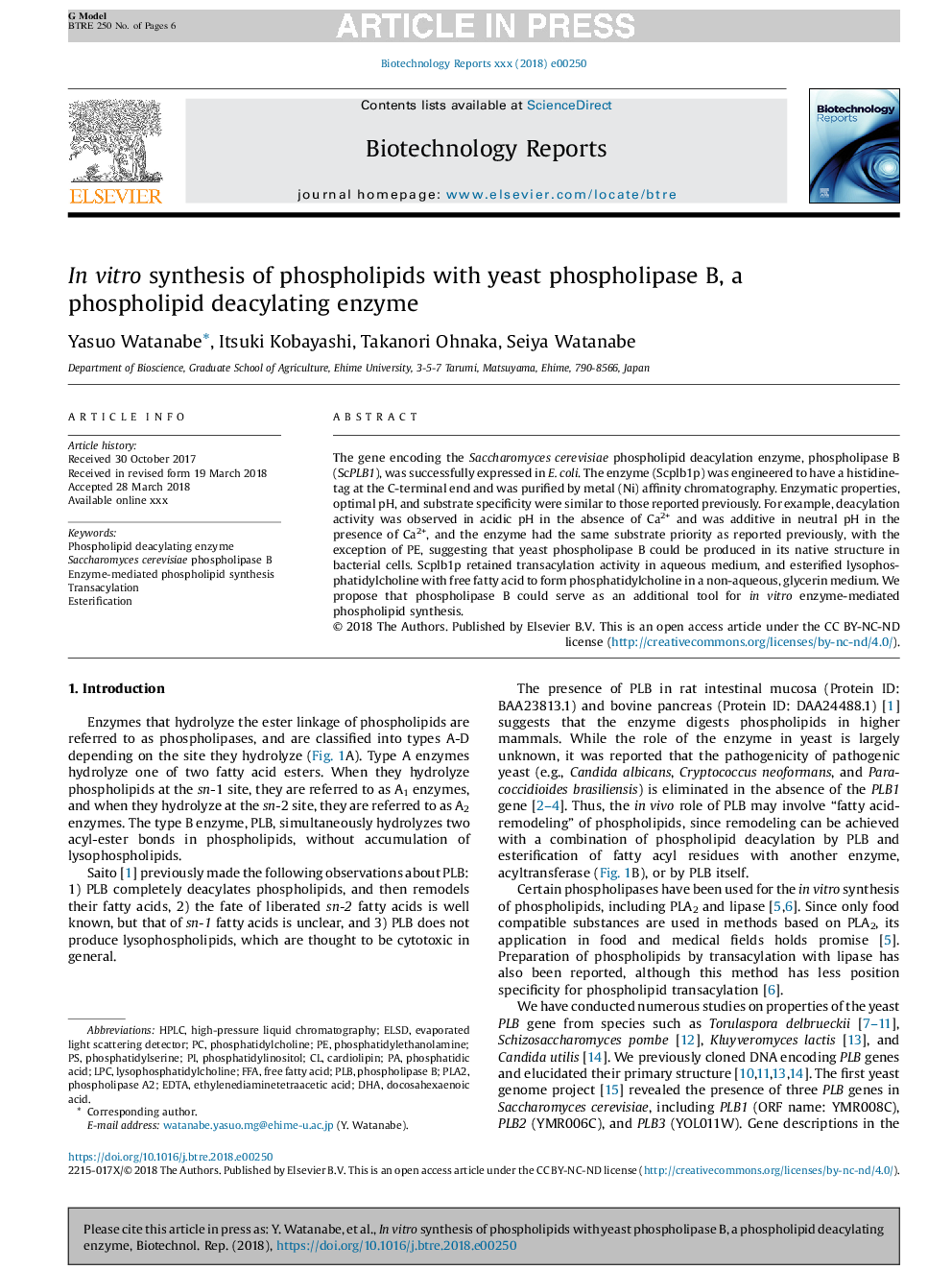| Article ID | Journal | Published Year | Pages | File Type |
|---|---|---|---|---|
| 7234920 | Biotechnology Reports | 2018 | 6 Pages |
Abstract
The gene encoding the Saccharomyces cerevisiae phospholipid deacylation enzyme, phospholipase B (ScPLB1), was successfully expressed in E. coli. The enzyme (Scplb1p) was engineered to have a histidine-tag at the C-terminal end and was purified by metal (Ni) affinity chromatography. Enzymatic properties, optimal pH, and substrate specificity were similar to those reported previously. For example, deacylation activity was observed in acidic pH in the absence of Ca2+ and was additive in neutral pH in the presence of Ca2+, and the enzyme had the same substrate priority as reported previously, with the exception of PE, suggesting that yeast phospholipase B could be produced in its native structure in bacterial cells. Scplb1p retained transacylation activity in aqueous medium, and esterified lysophosphatidylcholine with free fatty acid to form phosphatidylcholine in a non-aqueous, glycerin medium. We propose that phospholipase B could serve as an additional tool for in vitro enzyme-mediated phospholipid synthesis.
Keywords
PLBELSDPLA2FFALPCphospholipase A2EDTAEthylenediaminetetraacetic acidEsterificationdocosahexaenoic acidphosphatidic acidFree fatty acidTransacylationDHAphosphatidylinositolphosphatidylcholinephosphatidylethanolaminePhosphatidylserinePhospholipase BLysophosphatidylcholineCardiolipinhigh-pressure liquid chromatographyHPLC
Related Topics
Physical Sciences and Engineering
Energy
Renewable Energy, Sustainability and the Environment
Authors
Yasuo Watanabe, Itsuki Kobayashi, Takanori Ohnaka, Seiya Watanabe,
